
By Anne Quielle, TLG Senior Consultant
Two decades ago in the organization I served, we surveyed our employees to measure their satisfaction – with their pay & benefits, supervisors, job security, and work conditions. These were what the American Psychologist, Frederick Herzberg labeled as “hygiene factors,” which influence job satisfaction but not motivation.
We were able to trend satisfaction and gained some knowledge regarding the general mood of our employees which was important to us, but we didn’t have enough actionable data to target and impact key business measures.
Then we began to add questions asking about their feelings toward their work and the organization – how autonomous, challenged, empowered did they feel? What was their sense of responsibility and ownership? How connected did they feel with the other employees? Did they have friends at work?
We were measuring Herzberg’s “motivating factors,” which influence how a person performs on the job. Motivation leads to greater employee investment in work and higher levels of energy directed toward doing more, in other words, employee engagement.
The lesson we learned is that being satisfied is not enough. “Engagement” became our new focus. However, we also learned that employees may be motivated but not satisfied with the job. In our case, they liked the work because it presented a lot of variety and autonomy. Yet, they were worried about job security because of our turbulent industry. When potential job loss loomed large, productivity waned. It became critical to focus on both to build and sustain employee engagement.
Zappo’s, an on-line shoe retailer, is a recognized leader of driving employee engagement. Their commitment to engagement is articulated this way:
“The theme behind everything we do is engagement. We administer various programs designed to engage employees, and in some cases their families… We also plan events that bring employees together like pet adoption fairs and monthly birthday parties… We help drive charity engagement through partnerships with employee-chosen charities, fundraising challenges, and Karma Ad-venture volunteer work. In the end, we seek connections and stronger individuals & teams through fun and engaging programs, events, activities, and charity!”
Engagement is the well-spring of energy, and the discretionary energy that becomes an advantage when going the extra mile for a customer, that is Zappo’s signature service. I know because I shop there often!
Shouldn’t employee engagement be enough? What is the buzz about Employee Experience and how does it differ?
Employee Experience (EX) refers to all the touchpoints employees experience with the organizations in which they work – from first contacts with the recruitment and hiring process to the last interaction post-employment. EX goes beyond engagement since positive employee experiences mobilize the energy generated by engagement toward desired organizational and business results.
I recently attended a presentation featuring Humana’s approach to Employee Experience. Their strategy is driving a “Frictionless Workforce Experience (FWE)” by first examining all their core Human Resource processes and re-imagining them in light of driving an FWE at every touchpoint. Imagine entering your name once in the HR system, during the application process, and never having to enter it again throughout your employment. Consider, a personalized on-line experience with the HR system that happens to be integrated with IT so that you can get your company-issued laptop repaired or replaced seamlessly.
Improving the Employee Experience is more than new and improved HR policies and strategies, perks, parties and feel good tactics, or treating employees as customers. It is the deliberate employee-centric examination of processes, places, and workflow, based on “how can I make a difference here?” An effective design addresses the entire system with an employee-centric focus on their priorities and purpose.
We recommend an outcomes-based approach that includes the following elements:
- First, focus on the “why,” rather than the “how.” Ensure alignment on why you want to create a better EX. Build a vision and define the desired outcomes.
- Define composite characters or personas for key roles that share similar, unique requirements or functions. Know their values, priorities, and what brings them meaning and purpose.
- Map the current employment journey for each persona; uncover the written and unwritten policies, practices, and barriers to a seamless experience at key touchpoints.
- Articulate the desired end-to-end employee experience vision and design and identify solutions to create that experience (e.g. one-stop service platform spanning HR, IT, Purchasing, Facilities, etc.); build the business case that estimates benefits vs. investment required.
- Implement the recommended solutions using a phased plan for developing, testing, and refining.
The reasons for taking a systematic, outcomes approach to EX is compelling. According to the 2019 Global Human Capital Trends published by Deloitte Insights, enterprises with top quartile EX achieve double the innovation, double customer satisfaction, and 25% higher profits than those with bottom quartile Employee Experience. Even more convincing and according to Jacob Morgan’s Harvard Business Review article titled, “Why the Millions We Spend on Employee Engagement Buys Us So Little,” “those that invested most heavily in Employee Experience were included 28 times as often among Fast Company’s Most Innovative Companies, 11.5 times as often in Glassdoor’s Best Places to Work, 2.1 times as often in Forbes’ list of the World’s Most Innovative Companies, 4.4 times as often in LinkedIn’s list of North America’s Most In-Demand Employers.”
While positive employee satisfaction drives retention and employee engagement generates motivation and energy to go the extra mile, a seamless, meaningful employee experience mobilizes and directs that energy toward desired results for the entire organization and the customers and clients they serve.

